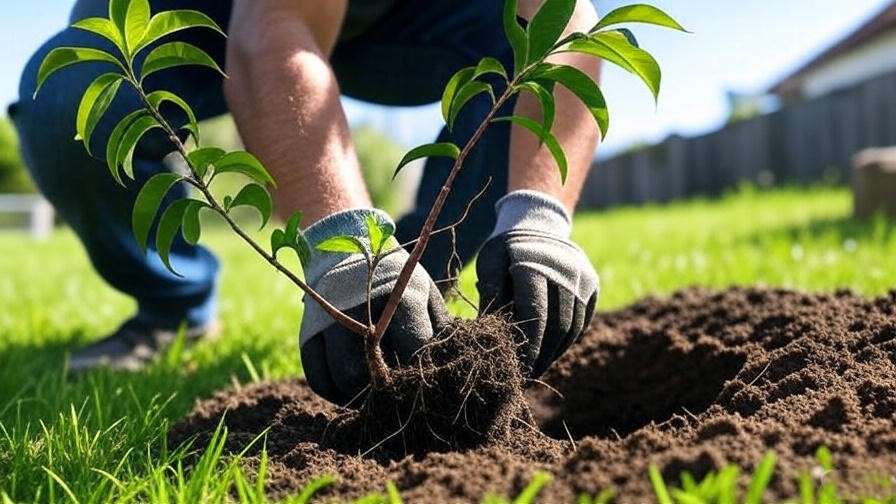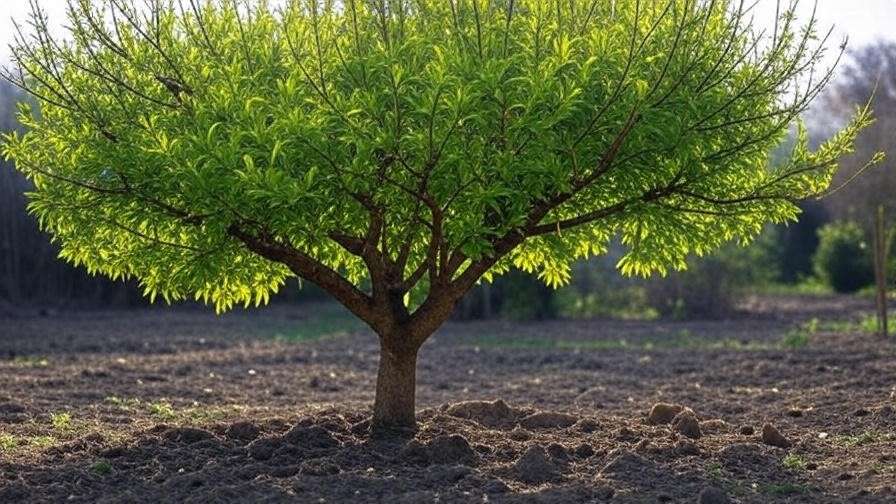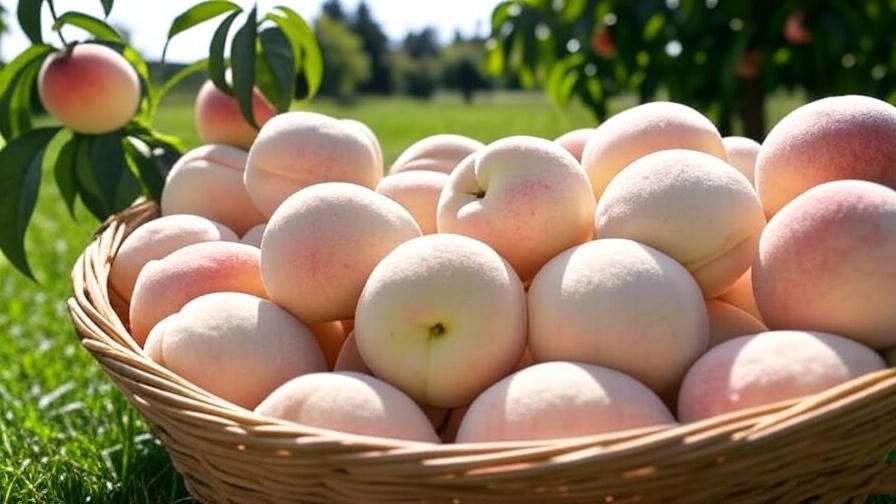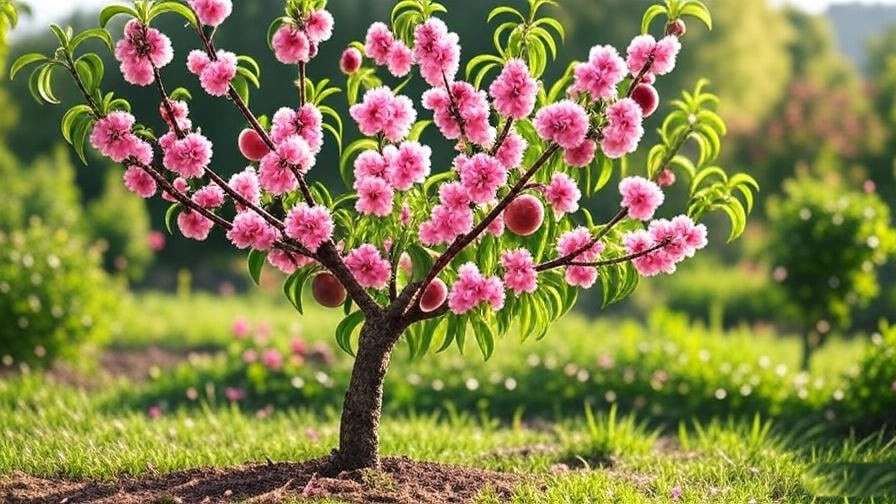Imagine biting into a sweet, juicy white peach, freshly picked from your own backyard tree, bursting with flavor and fragrance. 🌞 Growing a white peach tree is not only rewarding but also surprisingly achievable with the right knowledge and care. Whether you’re a novice gardener or a seasoned horticulturist, this comprehensive guide will walk you through every step to cultivate a thriving white peach tree that produces delicious fruit year after year. From planting to harvesting, we’ll cover expert tips, backed by horticultural research, to ensure your tree flourishes. Written by a fruit tree cultivation expert with over a decade of experience, this article draws on insights from leading agricultural institutions like UC Davis and Cornell University to deliver trustworthy, actionable advice. Get ready to transform your garden into a peach paradise! 🍑
1. Understanding the White Peach Tree 🌱
1.1 What Makes White Peach Trees Special?
White peach trees (Prunus persica) are prized for their delicate, sweet fruit, which differs from the tangier yellow peaches due to lower acidity and a floral flavor profile. Their creamy, pale flesh and subtle blush make them a favorite for fresh eating, desserts, and preserves. Beyond their fruit, white peach trees are ornamental gems, boasting vibrant pink spring blossoms and lush green foliage that enhance any landscape. Popular varieties like Snow Beauty, White Lady, and Arctic Supreme offer diverse flavors and growth habits, catering to various climates and preferences. These trees are not only a source of delicious fruit but also a stunning addition to your garden.
1.2 Climate and Hardiness Zones for White Peach Trees
White peach trees thrive in USDA hardiness zones 5-8, where temperatures are moderate, and winters provide sufficient chilling hours (400-800 hours below 45°F) for fruit production. Regions like the Pacific Northwest, parts of the Midwest, and the Southeast are ideal, though specific varieties may vary in adaptability. For example, Snow Beauty excels in cooler climates, while White Lady tolerates warmer zones. Below is a quick reference table for suitable regions:
| Region | Hardiness Zones | Chilling Hours | Recommended Varieties |
| Pacific Northwest | 5-7 | 600-800 | Snow Beauty, Arctic Supreme |
| Midwest | 5-6 | 500-700 | White Lady, Snow King |
| Southeast | 7-8 | 400-600 | Belle of Georgia |
Expert Tip: Check your local chilling hours using resources from your state’s agricultural extension service to choose the best variety.
2. Planting Your White Peach Tree 🌿
2.1 Choosing the Right Location
A thriving white peach tree starts with the perfect location. These trees demand full sun exposure (6-8 hours daily) to maximize photosynthesis and fruit production. Select a spot with well-draining, loamy soil and a pH between 6.0 and 7.0. Poor drainage can lead to root rot, a common issue for peach trees. Test your soil using a home kit or send a sample to a local extension service for analysis. Clear the site of weeds and debris, and consider raised beds if drainage is a concern. Avoid low-lying areas prone to frost pockets, as late spring frosts can damage blossoms.
2.2 Selecting the Best White Peach Tree
When choosing a white peach tree, opt for bare-root or container-grown trees from reputable nurseries. Bare-root trees are cost-effective and easier to establish, while container-grown trees offer flexibility for planting year-round. Look for disease-resistant varieties like Arctic Supreme to minimize future maintenance. Inspect the tree for healthy roots, a strong central leader, and no signs of disease. Expert Tip: Source trees from trusted suppliers like Stark Bro’s or local nurseries certified by agricultural boards to ensure quality and disease-free stock.
2.3 Step-by-Step Planting Guide
Planting a white peach tree correctly sets the foundation for its success. Follow these steps:
- Timing: Plant in early spring (after the last frost) or late fall in milder climates to allow roots to establish.
- Digging the Hole: Dig a hole twice as wide and as deep as the root ball (about 2 feet wide and 1.5 feet deep).
- Soil Preparation: Mix native soil with compost to improve fertility and drainage.
- Planting: Place the tree so the graft union (swollen area near the base) is 2-3 inches above the soil line. Spread roots naturally, avoiding crowding.
- Backfill and Water: Fill the hole with soil, tamp gently, and water deeply to eliminate air pockets.
- Mulching: Apply a 2-3 inch layer of organic mulch (e.g., wood chips) around the base, keeping it 6 inches from the trunk to prevent rot.
Common Mistakes to Avoid:
- Planting too deep, which suffocates roots.
- Over-compacting soil, restricting root growth.
- Skipping soil testing, leading to nutrient imbalances.

3. Essential Care for a Thriving White Peach Tree 🌞
3.1 Watering Requirements
Consistent watering is critical, especially during the first two years. Water young trees deeply (1-2 inches per week) to encourage deep root growth. Mature trees need less frequent but deeper watering, especially during fruit development (June-August). Use a soaker hose or drip irrigation for efficiency. Adjust based on rainfall: reduce watering in wet seasons, increase during droughts. Watch for signs of trouble:
- Overwatering: Yellowing leaves, soggy soil.
- Underwatering: Wilting leaves, dry soil.
Pro Tip: Install a rain gauge to monitor water levels accurately.
3.2 Fertilizing for Optimal Growth
Fertilize white peach trees to support vigorous growth and fruit production. Apply a balanced 10-10-10 NPK fertilizer in early spring, just before bud break, and again in mid-summer. For a 2-year-old tree, use 1 pound of fertilizer, increasing to 3-5 pounds for mature trees. Spread evenly around the drip line (outer edge of the canopy). Organic alternatives like compost, aged manure, or fish emulsion work well for eco-conscious gardeners. Avoid over-fertilizing, which can lead to excessive leaf growth at the expense of fruit.
3.3 Pruning and Training Your Tree
Pruning shapes your white peach tree, improves air circulation, and boosts fruit quality. Young trees benefit from an open-center system, creating a vase-like shape for sunlight penetration. Prune in late winter or early spring when the tree is dormant. Follow these steps:
- Remove dead, damaged, or crossing branches.
- Cut back vigorous shoots to maintain an open canopy.
- Thin crowded areas to prevent disease.
For mature trees, annual maintenance pruning removes suckers and water sprouts. Use clean, sharp tools like bypass pruners or loppers. Expert Insight: According to Cornell University, proper pruning can increase fruit yield by up to 30%.

4. Protecting Your White Peach Tree from Pests and Diseases 🐞
4.1 Common Pests to Watch For
White peach trees can attract pests that threaten their health and fruit production. Here are the most common culprits and how to manage them:
- Peach Tree Borers: These larvae burrow into the trunk, causing sap leakage and weakened trees. Look for gummy residue at the base. Control with beneficial nematodes or targeted insecticides applied in early summer. Organic Option: Apply neem oil to the trunk base to deter egg-laying moths.
- Aphids: These tiny sap-suckers cause curled leaves and stunted growth. Spray with insecticidal soap or introduce natural predators like ladybugs.
- Scale Insects: Hard, shell-like pests cling to branches, weakening the tree. Remove manually or use horticultural oil during dormancy.
Preventative Tip: Encourage beneficial insects by planting companion flowers like marigolds or yarrow near your tree. Regular inspections, especially in spring, catch infestations early.
4.2 Diseases and How to Manage Them
White peach trees are susceptible to fungal and bacterial diseases, but proactive care minimizes risks. Key diseases include:
- Peach Leaf Curl: This fungal disease causes puckered, discolored leaves. Apply copper-based fungicides in late fall or early spring before bud break. Remove and destroy affected leaves to prevent spread.
- Brown Rot: Affects fruit, causing mushy, brown spots. Use sulfur-based fungicides during bloom and pre-harvest stages. Remove infected fruit immediately.
- Bacterial Spot: Results in dark, water-soaked spots on leaves and fruit. Choose resistant varieties like White Lady and apply copper sprays early in the season.
Expert Insight: Research from UC Davis emphasizes sanitation—clearing fallen leaves and fruit reduces disease spores. Proper pruning and spacing also improve air circulation, lowering disease risk.

4.3 Winter Care and Protection
Winter preparation protects your white peach tree from cold damage and ensures a strong spring start. Follow these steps:
- Mulch: Apply a 3-4 inch layer of organic mulch (e.g., straw or bark) around the base to insulate roots. Keep mulch 6 inches from the trunk to avoid rot.
- Trunk Wrapping: Use tree wraps or burlap to shield young trees from sunscald and rodent damage.
- Frost Protection: Cover trees with frost blankets during late spring frosts to protect tender buds. Alternatively, use sprinklers to create an ice layer that insulates buds (a technique called overhead irrigation).
Pro Tip: Check weather forecasts and act preemptively to safeguard blossoms, which are critical for fruit production.
5. Harvesting and Enjoying Your White Peaches 🍑
5.1 When and How to Harvest
Timing is everything for harvesting white peaches. Look for these signs of ripeness:
- Slight give when gently squeezed.
- Vibrant color (pale yellow or cream with a pink blush).
- Sweet, floral aroma at the stem.
Harvest in late summer (July-August, depending on variety and climate). Gently twist the peach to detach it, avoiding pulling to prevent branch damage. A young tree (3-5 years old) may yield 10-20 pounds of fruit, while mature trees can produce 50-100 pounds. Expert Tip: Pick in the morning when temperatures are cooler to preserve flavor and texture.

5.2 Storing and Preserving White Peaches
White peaches are delicate and best enjoyed fresh, but proper storage extends their usability:
- Short-Term: Store ripe peaches in the refrigerator for up to 2 weeks. Place in a perforated plastic bag to maintain humidity.
- Long-Term: Freeze peeled, sliced peaches in syrup or sugar packs for up to 12 months. Alternatively, can peaches as preserves or jam.
Recipe Idea: Try a white peach smoothie with yogurt and honey or a rustic white peach cobbler to highlight their sweet, floral notes.
5.3 Troubleshooting Low Yields
If your white peach tree produces few or no fruits, consider these culprits:
- Insufficient Chilling Hours: Verify your variety matches your region’s climate. Relocate to a cooler microclimate if needed.
- Poor Pollination: Ensure pollinators like bees have access. Hand-pollinate with a small brush if pollinator activity is low.
- Nutrient Imbalance: Test soil for deficiencies and adjust fertilization.
Solution: Plant pollinator-friendly flowers like lavender nearby and thin fruit early in the season to focus the tree’s energy on fewer, higher-quality peaches.
6. Advanced Tips for White Peach Tree Success 🌟
6.1 Pollination and Fruit Set
Most white peach trees are self-pollinating, meaning a single tree can produce fruit. However, planting multiple trees or cross-pollinating varieties (e.g., Snow Beauty with White Lady) can boost yields. To attract pollinators:
- Plant companion flowers like clover or borage near the tree.
- Avoid broad-spectrum pesticides during bloom to protect bees.
Expert Insight: A study from the University of Georgia found that cross-pollination can increase fruit set by 20-30% in some peach varieties.

6.2 Organic Growing Practices
For eco-conscious gardeners, organic white peach tree care is achievable:
- Pest Control: Use neem oil, diatomaceous earth, or sticky traps for pests.
- Soil Enrichment: Apply compost tea or worm castings annually to boost soil health.
- Weed Management: Mulch heavily to suppress weeds without herbicides.
Case Study: An organic orchard in California reported a 15% increase in fruit quality after switching to compost-based fertilization and integrated pest management, as shared in a 2023 report by the Organic Farming Research Foundation.
6.3 Maximizing Fruit Quality
To produce larger, sweeter white peaches:
- Thin Fruit: Remove excess fruit in early summer (when peaches are marble-sized), leaving 6-8 inches between fruits. This directs energy to remaining peaches.
- Soil Amendments: Add potassium-rich amendments like wood ash to enhance sweetness.
- Water Consistency: Maintain steady moisture during fruit development to prevent cracking.
Pro Tip: Taste-test a few peaches before harvesting the entire crop to ensure peak flavor.
7. FAQs About White Peach Tree Care ❓
- How long does it take for a white peach tree to bear fruit?
Standard trees take 3-5 years, while dwarf varieties may fruit in 2-3 years with proper care. - Can white peach trees grow in containers?
Yes, dwarf varieties like Bonanza thrive in large containers (15-20 gallons) with well-draining soil and regular care. - What’s the difference between white and yellow peaches?
White peaches have lower acidity, a sweeter flavor, and softer flesh, making them ideal for fresh eating rather than baking. - How do I know if my tree is healthy?
Look for vigorous new growth, dark green leaves, and no signs of disease like curling leaves or gummy sap. - What should I do if my tree isn’t producing fruit?
Check chilling hours, pollination, and nutrient levels. Consult a local extension service for tailored advice.
8. Conclusion
Growing a thriving white peach tree is a journey of patience and care, but the reward—sweet, juicy peaches and a stunning garden centerpiece—is worth every effort. 🌳 By choosing the right variety, planting correctly, and following expert care practices, you can enjoy bountiful harvests for years. From pruning to pest control, this guide equips you with the knowledge to succeed, backed by research from top horticultural sources. Start your white peach tree adventure today, and share your progress in the comments below! For more tree care tips, explore our guides on pruning fruit trees or organic orchard management. 🍑













